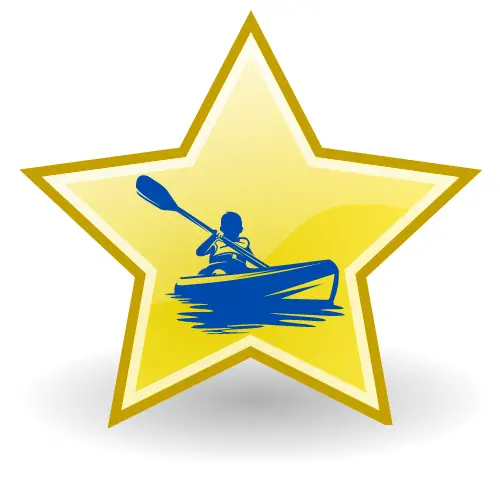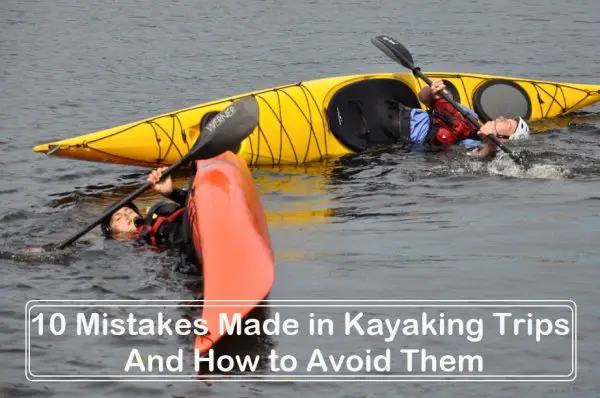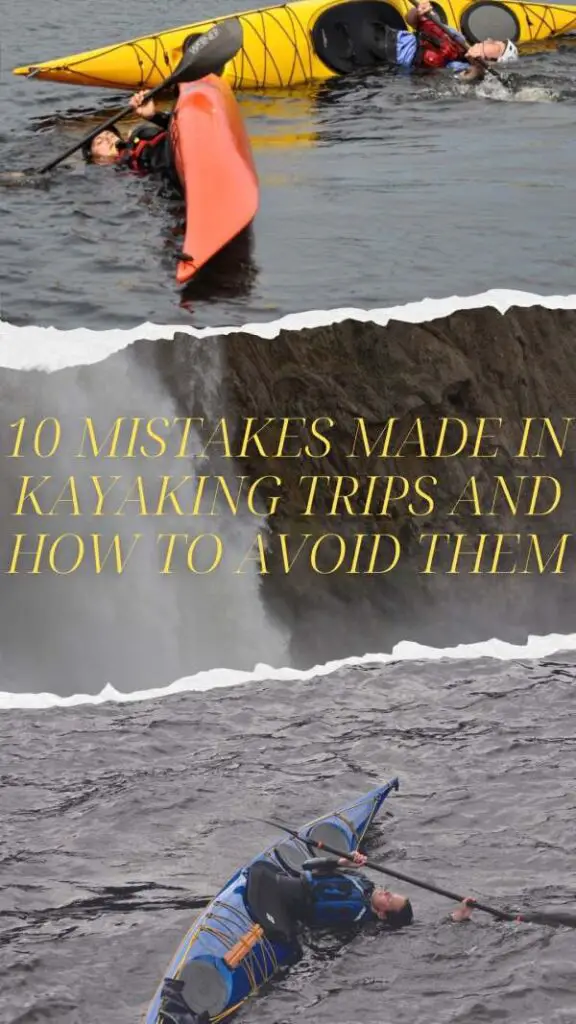
Table of Contents
Lack of skills and knowledge about kayaking
If you are considering kayaking for a weekend or vacation, it is important to remember that lowland kayaking does not require extreme skills. However, you should at least have an elementary understanding of kayaking. It is important to know how to paddle forward and backward, how to steer your kayak, how it behaves in the current, and how to overcome obstacles.
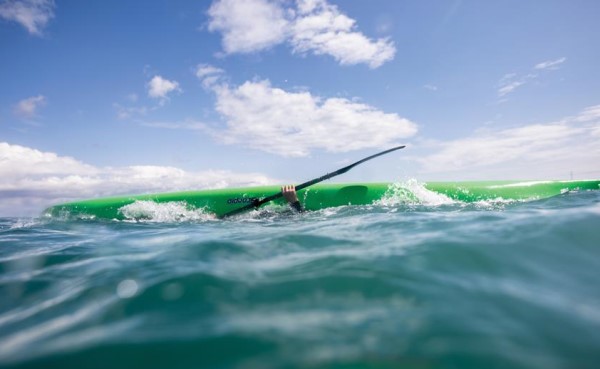
It doesn’t matter if only one person is an expert in this field and trains the others before the rafting begins. If we are not all experienced in kayaking, or if none of our group has any knowledge about the subject, then let’s not do it alone. You will do better to join an organized kayaking trip, where instructors will guide you and teach you how to use a kayak.
Many times, I have encountered river settlements where they are “struggling with nature” and have to endure the pain of trying to paddle together and get the desired result. Sometimes, it is not uncommon for “Sunday” kayakers to become submerged in the river alongside a drowned or overturned kayak. Basic skills in kayaking are easy to learn. It is worth asking for help and watching more experienced kayakers. You can avoid unwelcome surprises that often lead to arguments between participants by perfecting your skills. Capsizes of the cabin or kayak can pose a danger to your health. It’s not about having fun on the water, but it is important to have fun.
Failure to adapt the route to the skills and expectations of the group
Kayaking is an enjoyable form of active recreation. However, it is important that the route be adjusted to the needs and expectations of the group.
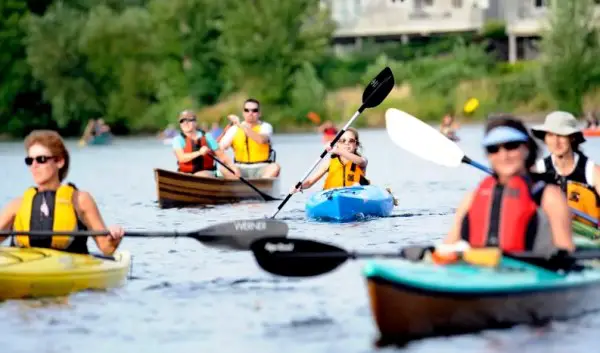
Beginners should only choose a small section of a lowland, easy river. Rafting participants will not be able to take in the beauty of the surroundings if they are too exhausted from long paddles. A rafting route that’s too strenuous, difficult, or full of obstacles and portages will frustrate those who aren’t used to physical exertion.
However, those who are fit, athletic, and skilled in kayaking, will find it boring and disappointing to paddle a section too easily of the river. Therefore, it is worth giving them the opportunity to experience a more difficult route. Swimmers and canoeists will be able to handle a lot of rapids and many obstacles in the river current. They also have the ability to paddle a greater distance than beginners.
Lack of a person in command and an established flow formation
You should choose one person to lead the canoeing trip with your friends. This will ensure that everything runs smoothly. For any kayaking trip, one person must lead. Although it is an extremely difficult and demanding job, this leadership role is essential for any kayaking trip. We all know that there will be many ideas and opinions for kayaking trips. Therefore, it is not uncommon to find disagreements. If everyone on the trip communicates with the kayaking equipment company or the company responsible for organizing the trip, there will be lots of information. This could lead to misinformation or duplicate messages.
The leader has responsibility for all participants on the trip, as well as their actions. However, he is also responsible for making all dispute resolutions and the group must respect these decisions. They must be organized, fair, punctual, and most importantly, have previous experience in kayaking, as well as in managing people.
The responsibilities of the “manager/commander” include, first of all: - Selection of the river and the section we intend to cover in kayaks. - Checking the options for getting to the launch site by public transportation or planning the route and parking for private cars and informing all trip participants of the details. - Contact the organizer and work out the details of renting canoeing equipment or participating in an organized canoeing trip. - Picking up and checking the equipment at the starting point of the canoe trip. - Selection of people for the canoes and decisions on possible substitutions in case of problems of any of the settlements. - Determining the flow formation, designating the opening and closing settlements, and contacting them in case of emergencies. - Select the place and time for camping in the case of a multi-day rafting trip or a break during a one-day rafting trip. - Reacting and making decisions for all rafting participants in emergency situations such as accidents on the river and on land, weather breakdowns, problems with lodging, equipment, or transportation. - See to it that the rented equipment is returned after the rafting is cleaned and completed.
Getting into the kayaks, we should establish the flow formation. This is the order in which the individual paddlers go down to the water and cover a selected section. The flow formation should be planned by the person with the most experience in kayaking, or by the rafting leader.
First of all, we decide who will open the flow formation and who will close it. Kayakers going first should know the section of the river they plan to paddle. They choose and show the other settlements the way to swim, inform them about obstacles, and belay difficult or dangerous places. The opening settlement must know the stopping places and the end of the rafting trip. The closing settlement, the so-called “red lantern,” makes sure that none of the participants are left behind or get lost. In the last kayak, there is also a first-aid kit, and the participants are obliged to make it available to an injured person in case of need. When kayaking in such a formation there is no risk that the kayakers will pass the place where the canoeing trip ends, or that the weaker group will be left far behind. It is good if the opening and closing parties have the possibility of contact (cell phone, walkie-talkie) and can inform each other about the course of the rafting or any problems and changes in the route.
When planning the flow formation, we place the weakest settlement, with the least water experience, right behind the opening canoe. In this way, the weakest participants set the pace and we do not risk that they will fall from strength and stay at the very end. At the same time, they can count on the assistance of a more experienced person in overcoming obstacles, instruction, or words of encouragement in difficult moments.
When going on a rafting trip for several days with luggage in kayaks, remember that the most loaded kayaks (e.g. canoes) should be accompanied by smaller, lighter, and faster boats (e.g. singles or single kayaks). Smaller kayaks, when in doubt, are able to efficiently penetrate the section ahead of the bow and point out the most convenient way to swim and, if the kayaks need to be moved, provide the extra pairs of hands necessary when carrying a large boat.
Covering long stretches on a rafting trip of several days, it is advisable to select from among the participants a person or persons experienced in kayaking and able to go alone in two-person kayaks. In this way, we gain additional space in each such kayak that can serve as a cargo hold for luggage or shopping (in the case of a trapper canoeing trip) or as a place for an injured person unable to paddle alone or requiring transport to shore.
Improper selection of settlements
Very often the participants of a canoeing trip present different degrees of skill when it comes to kayaking. It is important to properly select the settlements. People with no kayaking experience should not go in one kayak. It’s good for someone who can’t swim in the rapids or swims poorly to sit in a kayak with a person who feels good in the water.
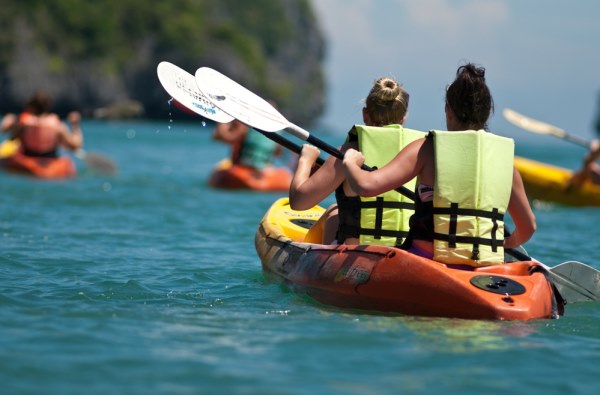
If possible, we should form mixed settlements – men usually have more strength, which will come in handy both when overcoming obstacles, portaging, and long hours of paddling. When getting into the kayak, remember that the heavier and more experienced person sits at the back – he will steer the kayak. In the bow will sit a lighter kayaker with less experience and he will be the one to set the pace of paddling. By following the above rules, we will avoid more serious arguments in the kayak and unnecessary fatigue after a day of paddling.
Disregard for the river, bravado, and alcohol
When planning a canoeing trip, let’s try to get information about the sections of the river we intend to cross. It’s a good idea to get a guide or map before the rafting trip, alternatively search the Internet or simply ask at the kayak rental company whose services you are using. If we participate in an organized canoeing trip, instructors should give us the necessary information during the briefing.
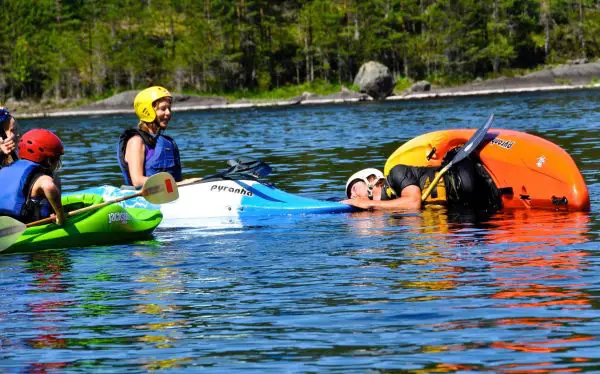
If we don’t learn anything in advance about the river we are going to paddle, it may turn out that this canoeing trip will not meet our expectations and we will return disappointed because the chosen part of the river will turn out to be too easy or too strenuous.
Never underestimate the information about portages, mills, weirs, and other water structures – these are often difficult, dangerous, or even unnavigable places. Bravado in these places can end in an accident, loss of health, or even life! Let’s verify the information we have or the warnings we encounter by viewing the place from the shore if in doubt.
Also, do not overestimate your strength and skills. Water is an element whose power we often do not realize. Even a calm lowland river lazily rolling its waters can cause us trouble if we behave too recklessly.
Kayaking under the influence of alcohol is prohibited by law, is highly irresponsible, and can end in tragedy. Summer, weekends, and the so-called “circumstances of nature” are conducive to all kinds of outdoor events, however, alcohol consumption prolongs reaction time and makes us lazy. On hot days, drinking alcohol in a kayak further exposes the body to dehydration. On cold days or in the rain, on the other hand, we may overcome ourselves because “one deeper” warms up only seemingly.
Remember that alcohol and water sports do not go hand in hand, so let’s rather postpone drinking a few beers until the evening bonfire.
Unprepared for weather conditions
When going on a canoeing trip, we need to be prepared for sudden changes in the weather and should take appropriate clothing with us. Even if you get into a kayak with cloudless skies overhead, you should pack a sweatshirt and a rain jacket to wear in case the weather breaks. Also summer evenings can be chilly, so if you plan to spend the whole day in a kayak, be aware that in the evening the temperature may be lower and a sweatshirt or a thin fleece will come in handy.

On a kayaking trip, headgear is indispensable. During hot weather, it will protect us from the unpleasant effects of sunstroke. We often underestimate such an eventuality and, contrary to appearances, it is not difficult to have a stroke, especially when kayaking on a trail leading through meadows and sparsely wooded areas. In worse weather, a hat or a baseball cap will ensure that rain streams will not run down our faces and flood our eyes.
Those who are inexperienced when it comes to paddling can get fingerless gloves (such as bicycle gloves) to protect their hands from blisters caused by excessive compression of the paddle stick.
If it is necessary to get out of the canoe into the water, let’s always do it in shoes. The bottom of the river can hide various unpleasant surprises, ranging from sharp roots or branches to broken bottles ending. A foot injury is very painful, makes walking difficult, and heals badly in rafting conditions. You can protect yourself from it by wearing sandals, water sports shoes, or even old sneakers that you do not regret getting wet. At the same time, I advise against flip-flops or flip-flops as they tend to float away.
For kayaking, you should also take cream with an adequate UV filter and sunglasses. Kayaking all day in a bathing suit or briefs is sure to end in a severe burn. During the strongest sunshine ( between 11 am and 2 pm) it is advisable to wear an undershirt or thin shirt with longer sleeves. A sunny day in a kayak without sunglasses can result in conjunctivitis, which is not pleasant.
If you plan to canoe with an overnight stay in tents, pack hiking clothes for the evening (sweatshirt, long pants) and lightweight trekking shoes – they will come in handy during a trip for wood or walks in the woods and, in addition to the cold, will protect you from annoying insects.
Shortages of equipment and supplies
When deciding to take even a short kayaking trip, it is a good idea to take drinks and food with you. Paddling in the heat, our body loses water quickly and we should replenish it regularly. We can also be sure that after a few hours of paddling, we will be hungrier than having spent the same time in front of the TV, so it is worth taking a sandwich, fruit, or energy bars into the kayak.
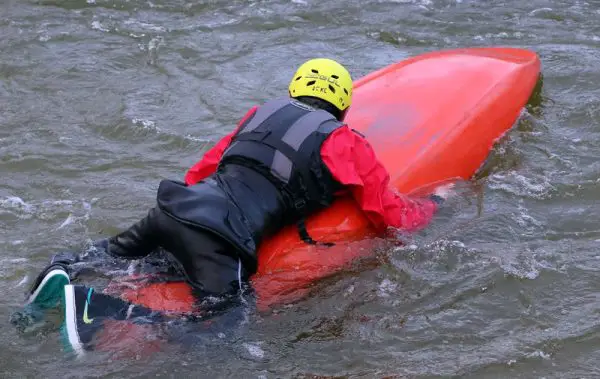
When renting a kayak or participating in an organized kayaking trip, always make sure you have safety vests on board. The organizer or owner of the rental company is obliged to provide them to each participant in the rafting trip. Everyone, regardless of ability, should wear a fastened vest at all times. In case of sudden chill, rain, or wind, the belay vest is an additional layer to protect us from the cold.
Before leaving for a rafting trip, it’s a good idea to stock up on a few meters of strong rope – it will come in handy as a mooring, when pulling the kayak in the shallows, pulling it out of the water after the cabin, or pulling it onto a high bank or fallen tree. It’s also worth packing a pocket knife and a flashlight. These gadgets do not take up much space and are invaluable in an emergency situation.
It is good if you have a sponge in your kayak, which you can use to remove water, leaves, or sand from the bottom of the boat.
When planning a longer rafting trip or going down a difficult river, it is worth taking a spare paddle. The reserve will come in handy when our paddle breaks “in action”, gets stuck between rocks or branches of fallen trees, or mysteriously floats away choosing freedom.
No first aid kit
There should be a first aid kit on every canoe trip. It always floats in the last canoe. Keeping this rule, the injured person does not have to look for a first-aid kit among the rafting participants and it is enough to stop at the shore and wait for the closing settlement.

The first-aid kit should contain basic medicines to prevent colds and diarrhea, painkillers and anti-allergics, an NRC blanket, bandaging materials, elastic bandages, and preparation to reduce the effects of burns.
Lack of communication and ability to contact the world
When kayaking, we are often far from civilization, in the midst of forests, away from human settlements. We should remember to take with us and properly protect ourselves from getting wet a cell phone with a charged battery. It is very important to take with you the phone number of the rafting organizer, the owner of the rental company, or the driver who delivered the kayaks to us. In case you need to end the rafting trip early, get lost, or have problems with the equipment or access, contacting such a self will be essential.

Spending time on a canoeing trip, we want to relax in nature and commune with wildlife, but in an emergency situation, we must be able to contact or call for help.
No concept of transportation, logistics
To make a kayak journey, you must first get there and then return to your destination. Let’s first consider how transportation works. There is no need to worry if you can get there by train/bus. We should ask the organizer if there are any other transportation options available if we are starting our rafting trip from a remote location. Let’s check out the details of the departure after the event. We still have time to make connections and plan our route, taking into account the estimated time of the end.

If you bring your own car to an organized trip for rafting, it’s worth finding out where they will be left and how we will pick them up.
If you organize the canoe trips yourself, you should first meet the hosts from the villages around the starting point. They will happily allow you to leave a few cars at their property for a small fee. It is a good idea for at least one vehicle to be left at the site where the rafting event finishes, even if it’s not yet started. After the event ends, drivers can use the waiting vehicle to pick up the remainder of the vehicles.
Our best posts:
